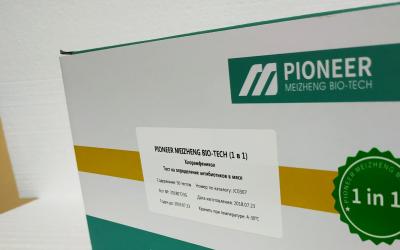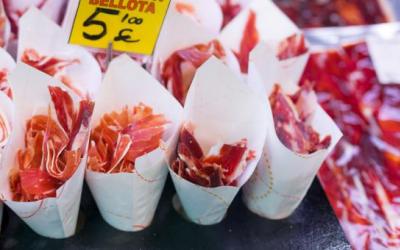Severstal CEO names key condition for steel demand recovery

The recovery of demand for steel in Russia is possible if the key rate is reduced to 12%. This forecast was announced to journalists by Severstal CEO Alexander Shevelev, an RBC correspondent reports. The current rate continues to put pressure on business activity and demand. At the same time, competition from imports is growing on the market, in particular, from Kazakhstan and CHINA . In such conditions, the company is analyzing the possibility of resorting to anti-dumping measures to stabilize the situation.
According to Shevelev, the sharpest drop in demand was recorded in mechanical engineering — about 25%, and in energy. In construction, steel consumption fell by 13%. According to the results of the first half of the year, steel production in Russia may decrease by 15%, and by the end of the year — by 12%, taking into account the low base effect of the third-fourth quarter of 2024, when consumption began to fall. "We believe that in a situation where the key rate reaches a value of about 12%, with a certain lag, from six months to a year, we will be able to see a recovery in demand," Shevelev noted. In the meantime, according to him, the current rate continues to have a restraining effect on investment activity in the economy.
According to Severstal, in 2025, domestic steel consumption will amount to 38.5–39 million tons, with the industry's total production capacity at 76 million tons. "Do you understand the level of underconsumption? This is more than the entire mechanical engineering industry consumes — 5–6 million tons," Shevelev explained.
Part of the excess metal is exported - despite a significant drop in marginality, producers, primarily vertically integrated ones, have the opportunity to sell products for EXPORT at their own costs. Key supply destinations include Asia, North Africa and the CIS countries.
Today, there are risks of increased competition in foreign markets as a result of the tariff policy pursued in the United States . There is potential for a reduction in export margins, says independent industrial expert Maxim Khudalov, but it is small. In previous years, the situation was stabilized by the low ruble exchange rate - however, in the current situation, there is a risk of a repeat of the coal scenario in metallurgy, he notes.
"A limited number of metallurgists today have the opportunity to economically justify selling for export, so there will obviously be a decrease in production for the majority," Shevelev summed up. According to him, some capacities will be stopped or underutilized, and some units will not come out of repairs. At the same time, Severstal maintains its production forecast at 11 million tons of steel this year and does not plan to reduce output. "We sell for export not because we want to maintain capacity, but because we see an opportunity to earn money," he said. The company plans to focus on more complex and premium products and sell "in a niche" both on the domestic market and on foreign markets - however, for now, hot-rolled coil and slabs are mainly exported.
The growth of imports creates additional pressure on the Russian market. According to Shevelev, the largest volume of supplies comes from Kazakhstan and China. At the same time, half of Chinese imports are mainly products that are not produced in Russia (stainless steel, fasteners, tableware). The main pressure from competition falls on regions where China has a logistical advantage - in the Far East and Siberia.
In January-May 2025, imports of iron, steel and products from them from China to Russia increased to $1.63 billion (+16%). In May, shipments increased by almost 22%, to $355.44 million. According to the results of 2024, the growth of imports of Chinese steel, iron and products from them by 2023 amounted to 1.3%.
"We do not rule out the initiation of anti-dumping measures to stabilize the market. We are currently actively analyzing the situation and trying to understand what levers we can use. Our system is not set up like in other countries, like in America, where they could introduce any duty they wanted and from tomorrow. We are analyzing and, perhaps, will try to resort to these measures. But so far we are not resorting to them," the HEAD of Severstal noted.
In the coming year, the Chinese steel glut will be a "nightmare for global steelmakers," but in the long term, it will subside within a couple of years as a result of the end of support for loss-making steel companies in China, Khudalov believes. According to his estimates, the steel glut on the market should shrink within a few years.
Shevelev also commented on the issue of adjusting the excise tax on liquid steel. He noted that the tax introduced in 2022 became a form of collecting excess profits, despite the fact that there are no such profits in the industry anymore. "Obviously, this is a somewhat Jesuit form of additional tax. If it cannot be canceled, let's at least make it adequate and fair," he said.
The excise tax on liquid steel, which is traditionally used to produce metal products, has been in effect in Russia since January 1, 2022. It was introduced to seize excess profits from the industry in the event of a sharp rise in prices. The excise tax rate is 2.7% of the average monthly export price of a slab (metallurgical semi-finished product) in seaports in the south of Russia, but is reset to zero if the slab price is less than 30 thousand rubles per ton.
"We believe it is fair to use the cutoff price set in 2022, taking into account the inflation accumulated over four years, and to ensure its indexation in the future - this is about 43 thousand rubles per ton," Shevelev explained the proposal for adjustment, adding that the company does not "have great illusions" about the changes and there are currently no active discussions. However, if the decision is made, it could come into effect in January 2026.
ReadPIONERPRODUKT .by inTELEGRAM .
Read together with it:
- The IEA sees a risk of a decline in oil production in Russia due to sanctions.The IEA sees a risk of reduced oil production in RUSSIA due to US sanctions , but maintains its production forecast. According to the IEA, Russian oil exports will remain unchanged.There is a "significant downside risk" to Russia's oil production forecast due to US sanctions, the International Energy Agency (IEA) said in a report.BLOOMBERG . The agency's experts believe that the latest US sanction...
- UniCredit заявил о галактических усилиях из-за санкций против РоссииUniCredit старается не нарушить «более 15 тыс. санкций», а также не «совершать ошибки», которые позволят изъять его активы в России, заявил гендиректор. После начала военной операции банк начал рассматривать возможность ухода Итальянский банк UniCredit прилагает «галактические усилия», пытаясь соблюсти международные санкции в отношении своего российского подразделения. Об этом заявил генеральный д...
- "Коллективы АПК способны решать любые задачи даже в непростых условиях". Назаров о заслугах сельхозпроизводителейЮрий Назаров 13 ноября, Минск. Обеспечение продовольственной безопасности страны - большое достижение трудовых коллективов аграриев, отметил управляющий делами Президента Республики Беларусь Юрий Назаров на торжественной церемонии награждения государственными и иными наградами работников АПК Управления делами Президента Республики Беларусь, передает корреспондент БЕЛТА. Торжественная церемония наг...
- Sustainable growth of the food and processing industries in BashkortostanIlshat Fazrakhmanov, Deputy Prime Minister andThe regional Minister of Agriculture noted that the development of these industries provides the population with essential food products and contributes to increased exports. Since 2020, agricultural exports from the region have doubled. Since the beginning of 2......
- Низкое предложение и устойчивый спрос: в Аргентине растут цены на мясоЦены на говядину снова выросли, что отразилось на полках супермаркетов и в мясных магазинах. За последние две недели розничные цены выросли на 8–12%, а на некоторые популярные отрубы рост превысил 15% по сравнению с октябрем. Тем не менее, продажи остаются высокими: потребители продолжают покупать, принимая новые цены и закрепляя тенденцию, которая повторяется каждый год в конце года, когда спрос ...
- Колумбия: При экспорте скота сертификация и прослеживаемость больше не являются необязательнымиВысококачественное животноводство, особенно при экспорте, требует сертификации и прослеживаемости. Это необходимые условия для выхода и конкуренции на многих международных рынках, а также на некоторых всё более требовательных внутренних рынках. Колумбийское животноводство не является исключением из этих правил, и, хотя предстоит ещё многое сделать, всё большее число ферм и компаний внедряют эти ме...
- Китайский рынок мяса: консолидация, меры безопасности и проблема субпродуктов«Мы завершаем выставку CIIE в Шанхае, в целом хорошую выставку, где мы видим консолидированные цены, как это было с начала года, но в то же время рынок ожидает решения по защитной мере, определения которой должны быть даны в конце ноября», — сказал он Valor Agregado Agro. Лидер пояснил, что глобальная ситуация характеризуется «колебаниями на международном рынке, вызванными интенсивной геополитичес...



























































